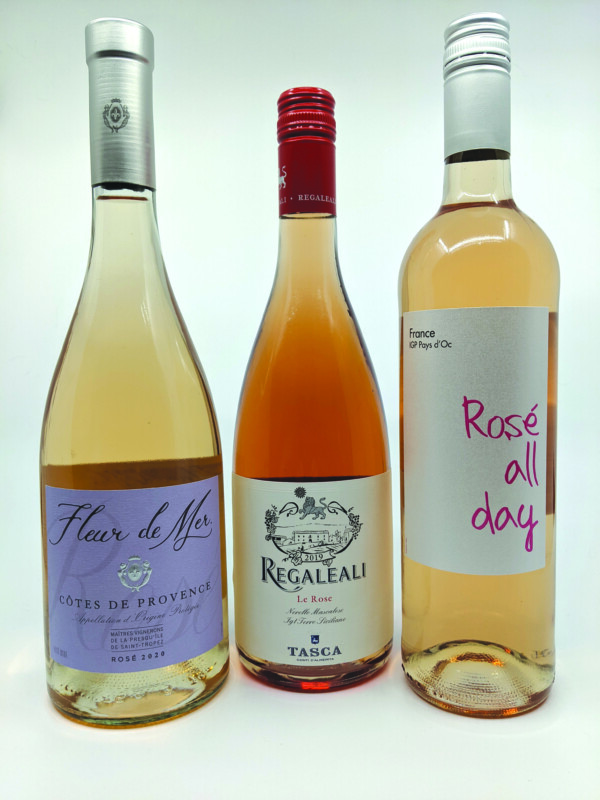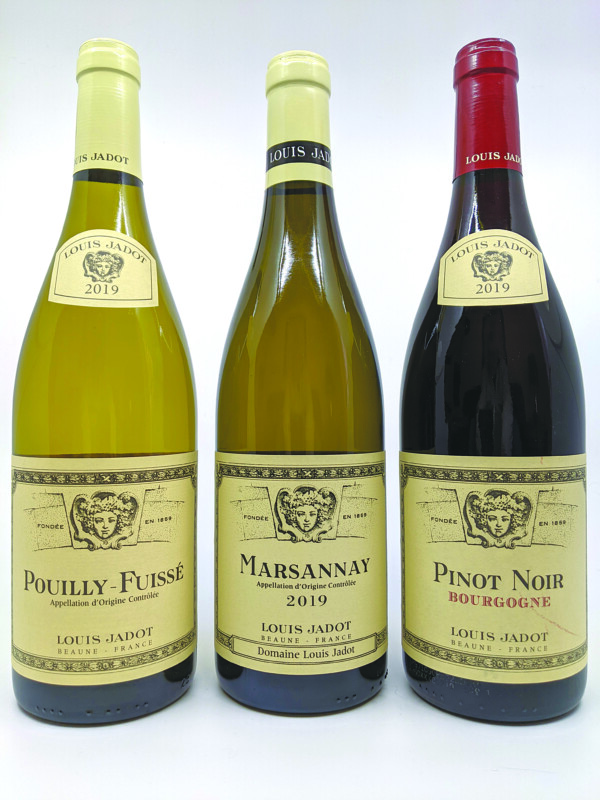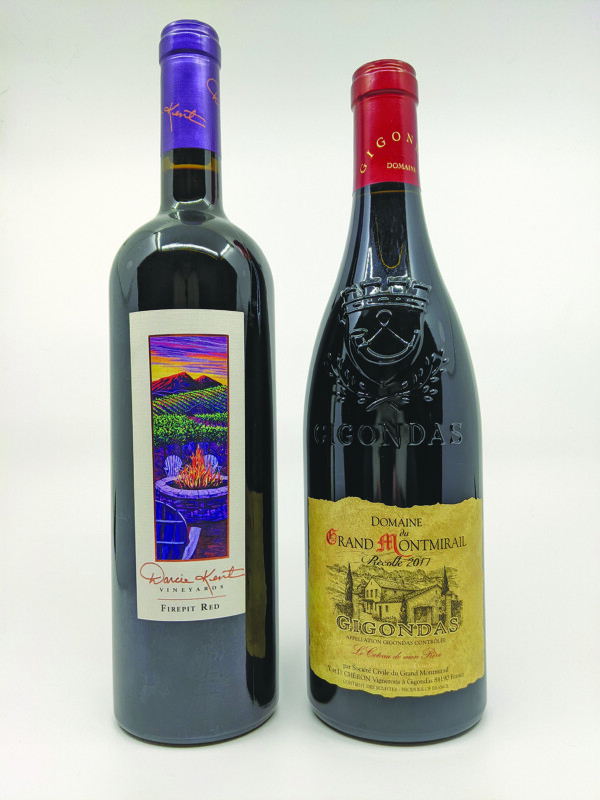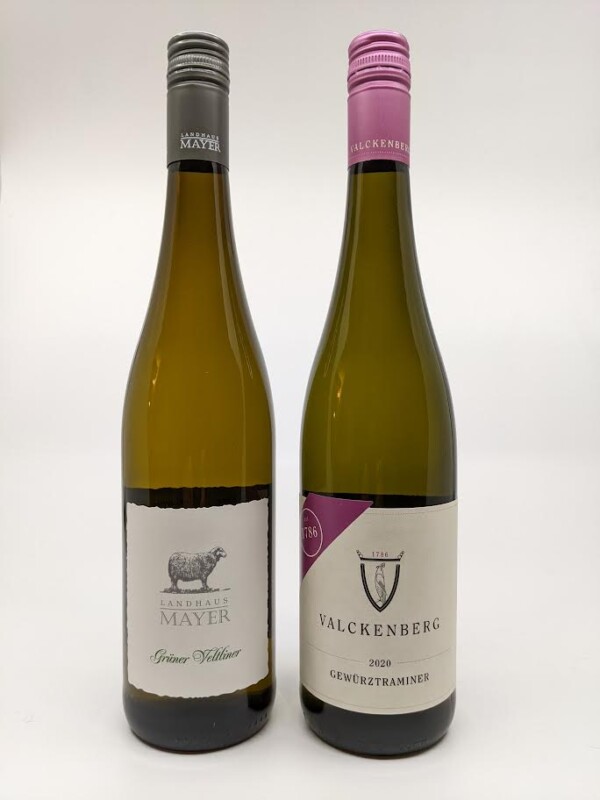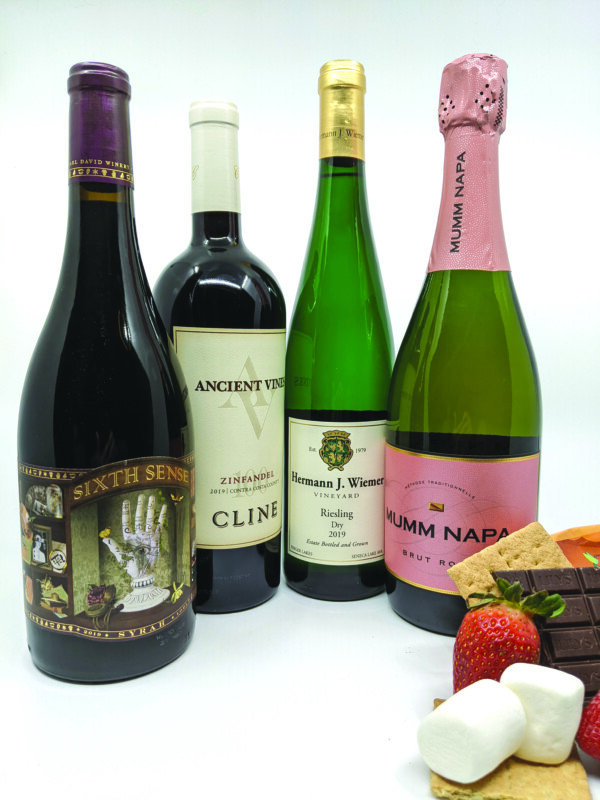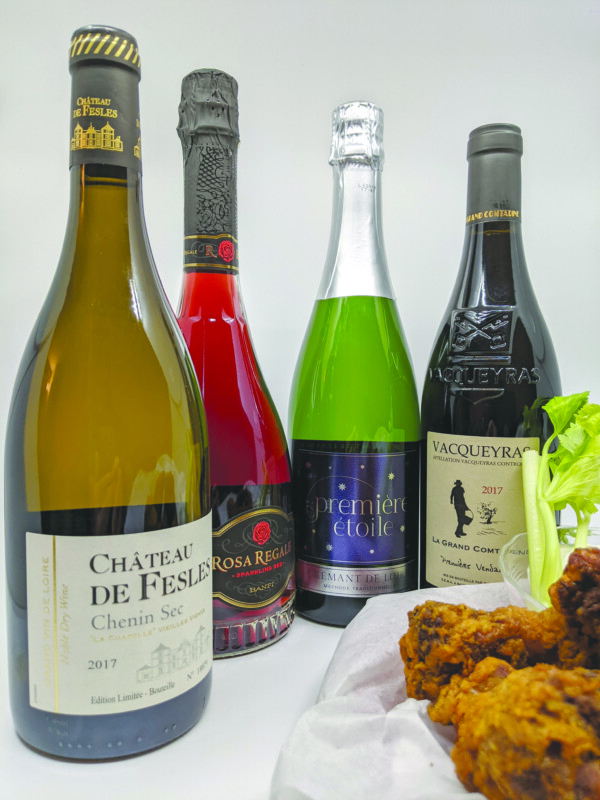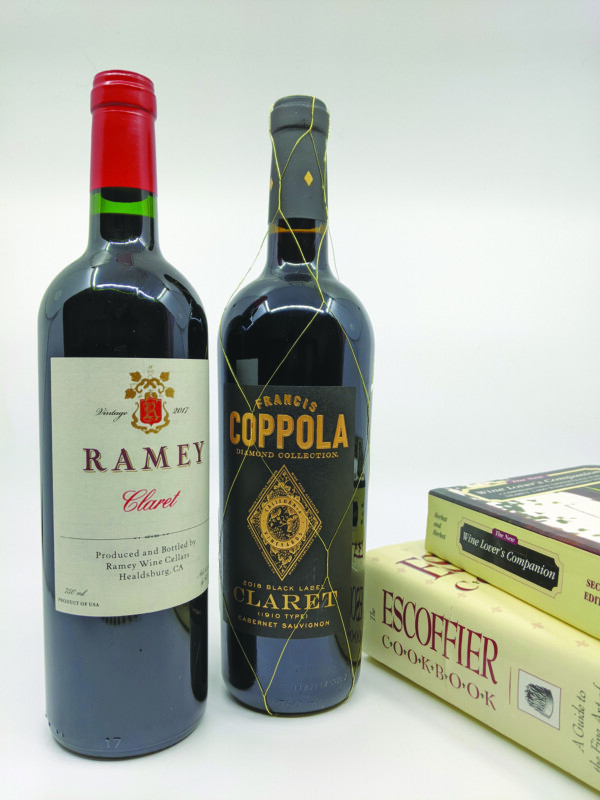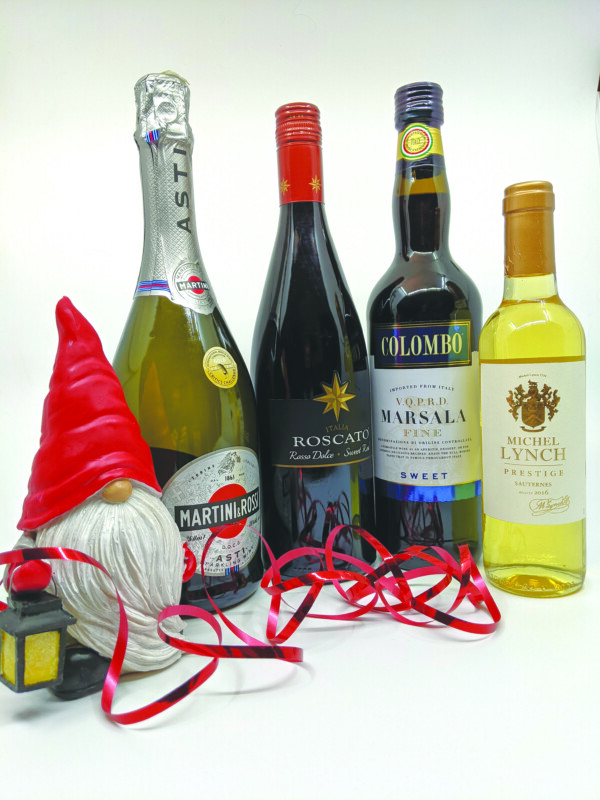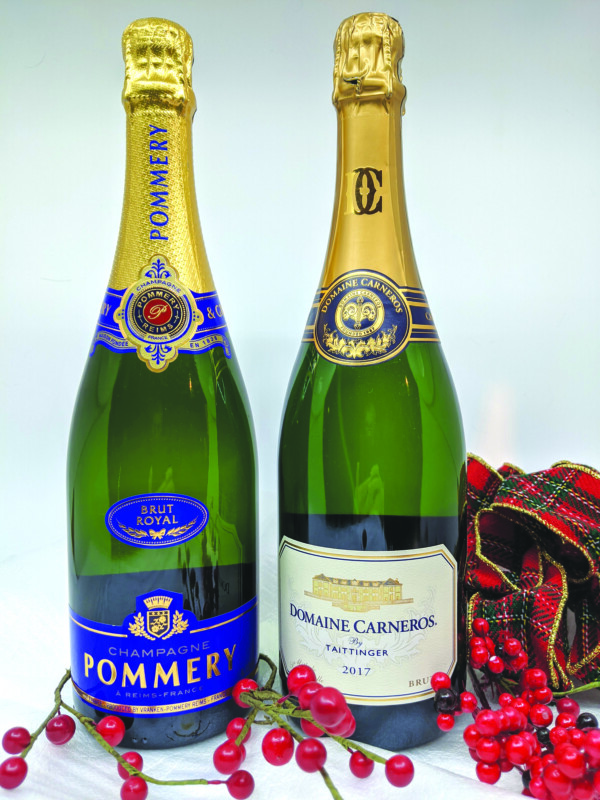Lighten up with some rosés
It’s official! Spring is here! It happened at 11:33 a.m., March 20. Mother Nature may not be able to make up her mind as one day the temps rise into the 50s and the next day temps barely rise to the 30s. But spring is a mindset. It is more than the promise of longer days. It is a time of rebirth. It is the time to change from dark, luscious, chewy reds to wines that reflect our wanting to shed the wrappings and trappings of winter and embrace something new and light. It is the time to visit the garden to see what is popping through the last vestiges of winter. Spring is the time to try this year’s offering of rosé wines.
Our first wine is a 2020 Fleur de Mer Rosé (originally priced at $21.99 at the New Hampshire Liquor & Wine Outlets, and on sale with a price of $16.99). It has a brilliant coral pink color and is a medium-bodied wine that evokes aromas and flavors of subtle citrus, lavender and Mediterranean herbs. It is fresh and elegant with a soft texture and mineral finish that is balanced with refreshing acidity. Fleur de Mer means “Flower of the Sea,” and the wine brings to mind the region’s famed fields of flowers and vines that bask in the warm summer sun. Côtes de Provence is an extensive appellation that includes vineyards of the greater Provence region and extends east all the way to the Italian border. Its sites vary from subalpine hills, receiving the cooling effects of the mountains to the north, to the coastal warm Mediterranean of St-Tropez. This wine is a superior rosé, made from high-quality 43 percent grenache, 23 percent cinsault, 12 percent carignan, 7 percent mourvedre grapes, and 15 percent selected other varieties. It can be sipped with hors d’oeuvres of soft cheeses and berries or paired with fish or chicken.
Our second wine is a 2019 Tasca D’Almerita Regaleali Terre Siciliane Rosé (originally priced at $16.99 at the New Hampshire Liquor & Wine Outlets, and on sale with a price of $7.99). Located in the mountainous heart of inland Sicily, Tenuta Regaleali is a vast estate owned and operated by the Tasca d’Almerita family since 1837. Almost 1,000 acres of vineyards thrive between 1,300 and 3,000 feet above sea level. Soils vary from vineyard to vineyard, creating a mosaic of geologic compositions. The microclimate here boasts excellent light and temperatures of hot days and cool nights. Wine Enthusiast named Tasca d’Almerita the 2019 European winery of the year.
Produced from nerello mascalese grapes, grown almost exclusively on the side slopes of Mount Etna, that give Le Rose di Regaleali its class and elegant fragrance and its deep salmon-pink color, this wine offers delicate aromas of cherry, raspberry, blackberry and, appropriate to its name, rose petals. Rich on the palate with refreshing acidity and a long, flavorful finish, it is perfect for pairing to tuna, salmon, poultry, pork and flavorful pasta dishes. This wine is universally food-friendly.
Our third wine is just plain fun! The IGP Pays d’Oc Rosé All Day has us returning to the south of France, but this time we go to the Languedoc-Roussillon region, west of Provence. A quick interpretation of the label: IGP (Indication Géographique Protégée) places this wine between table and superior wines. D’Oc, or the Languedoc-Roussillon region, shares many of the terrain and climate characteristics with the neighboring regions of Southern Rhone and Provence, but at a far greater value. A top trending wine hashtag, #RoséAllDay has become a social media phenomenon with hundreds of thousands of rosé lovers sharing their excitement for the wine by posting pictures emulating a trendy, chic lifestyle. Made from grenache grapes, this wine has the nose of watermelon and strawberry, with crisp, fresh notes on the palate, and a long fruity finish. Pair this with fish, chicken and sushi, or salads and appetizers, but always enjoy it with friends! It’s also available in cans for those warm, sunny afternoon picnics.
So succumb to the allure of spring fever, catch a bit of sunshine, and go out and “smell the rosés.”

